Related Research Articles
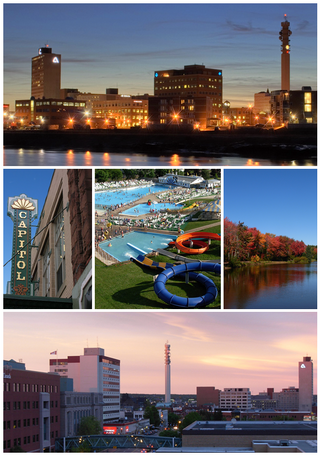
Moncton is the most populous city in the Canadian province of New Brunswick. Situated in the Petitcodiac River Valley, Moncton lies at the geographic centre of the Maritime Provinces. The city has earned the nickname "Hub City" because of its central inland location in the region and its history as a railway and land transportation hub for the Maritimes. As of the 2021 Census, the city had a population of 79,470. The metropolitan population in 2022 was 171,608, making it the fastest growing CMA in Canada for the year with a growth rate of 5.3%. Its land area is 140.67 km2 (54.31 sq mi).
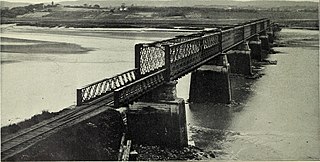
The Avon River is a small river in central Nova Scotia, Canada.
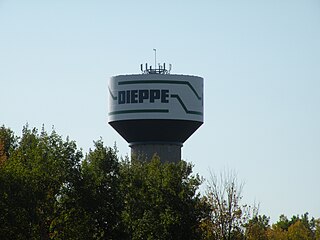
Dieppe is a city in the Canadian maritime province of New Brunswick. Statistics Canada counted the population at 28,114 in 2021, making it the fourth-largest city in the province. On 1 January 2023, Dieppe annexed parts of two neighbouring local service districts; revised census figures have not been released.
Route 15 is 79 kilometres (49 mi) long and is in the southeastern corner of the province of New Brunswick. Starting at the north end of the Petitcodiac River Causeway, it loops around the city of Moncton on Wheeler Boulevard, then turns northeast from Dieppe to Shediac. From there, it turns east and bypasses Cap-Pelé crossing the Scoudouc River, then southeast to meet the Trans-Canada Highway at Port Elgin. The highway is a divided freeway from Moncton to just east of Shediac, where it remains a controlled-access highway until east of Cap-Pele.

Memramcook, sometimes also spelled Memramcouke or Memramkouke, is a village in Westmorland County, New Brunswick, Canada. Located in south-eastern New Brunswick, the community is predominantly people of Acadian descent who speak the Chiac derivative of the French language. An agricultural village, it has a strong local patrimony, key to the history of the region. It was home to Mi'kmaqs for many years and was the arrival site of Acadians in 1700. A large part of these Acadians were deported in 1755, but the village itself survived.
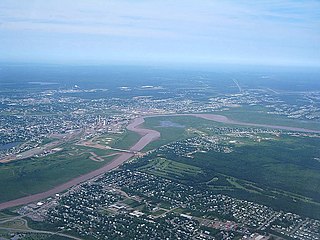
The Petitcodiac River is a river located in south-eastern New Brunswick, Canada. Local tourist businesses often refer to it as the "chocolate river" due to its distinctive brown mud floor and brown waters. Stretching across a meander length of 79 kilometres, the river traverses Westmorland, Albert, and Kings counties, draining a watershed area of about 2,071 square kilometres (800 sq mi). The watershed features valleys, ridges, and rolling hills, and is home to a diverse population of terrestrial and aquatic species. Ten named tributaries join the river in its course toward its mouth in Shepody Bay. Prior to the construction of a causeway in 1968, the Petitcodiac River had one of the world's largest tidal bores, which ranged from 1 to 2 metres (3.3–6.6 ft) in height and moved at speeds of 5 to 13 kilometres per hour (3.1–8.1 mph). With the opening of the causeway gates in April 2010, the river is flushing itself of ocean silts, and the bore is returning to its former size.

Salisbury is a town located in Westmorland County, New Brunswick, Canada.

The Gunningsville Bridge has been a name given to five different bridges that crossed the Petitcodiac River between Moncton at Route 106 and Riverview, New Brunswick at Route 114, New Brunswick, Canada. The latest Gunningsville Bridge opened on November 19, 2005. This is one of two links that cross the Petitcodiac River from Moncton to Riverview; the other is the Petitcodiac River Causeway. The Route links Vaughan Harvey Blvd In Moncton with Gunningsville Blvd In Riverview.

Route 106 is a highway in New Brunswick, Canada; running from an intersection with Route 1 and the western terminus of Route 905 in Three Rivers to the intersection of Trans-Canada Highway and the southern terminus of Route 940 in Sackville; a distance of 91.8 kilometres.
Route 114 is a 137.6 km (85.5 mi) Canadian secondary highway in southeastern New Brunswick.

New Brunswick is one of Canada's three Maritime provinces. While New Brunswick is one of Canada's Maritime Provinces, it differs from its neighbours both ethnoculturally and physiographically. Both Nova Scotia and Prince Edward Island are either wholly or nearly surrounded by water and the ocean, therefore, tends to define their climate, economy and culture. New Brunswick, on the other hand, although having a significant seacoast, is sheltered from the Atlantic Ocean proper and has a large interior that is removed from oceanic effects. New Brunswick, therefore, tends to be defined by its rivers rather than its seacoast.
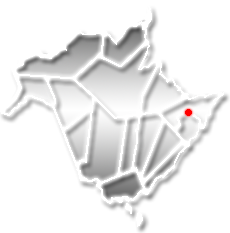
The history of Moncton extends back thousands of years, with its first inhabitants being the First Nations of the region, such as the Mi'kmaq. Located in New Brunswick, Moncton's motto is Resurgo, which is Latin for I rise again. This motto was originally chosen in celebration of the city's rebirth in 1875 after the recovery of the economy from the collapse of the shipbuilding industry. The city again lived up to its motto in more recent times, when the economy of the city was devastated once more during the 1980s as a result of the city's largest employers all departing the city in short order. The city has since rebounded due to growth in the light manufacturing, technology, distribution, tourism, and retail sectors of the economy and is now the fastest growing city in Canada east of Toronto.
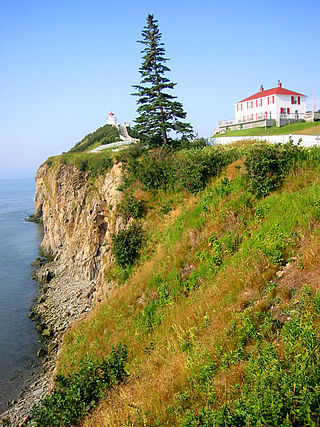
There are two major national parks. The warmest salt water beaches north of Virginia can be found on the Northumberland Strait, at Parlee Beach in Shediac. New Brunswick's signature natural attraction are only a half hour's drive down the Petitcodiac river valley. The Confederation Bridge to Prince Edward Island is only an hour's drive east of Moncton.

This is a timeline of the history of Moncton.
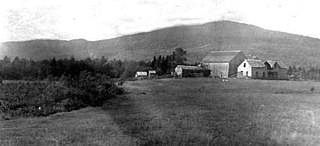
Shepody is a rural community in southeastern New Brunswick, Canada, situated on Shepody Bay, along Route 114 between Hopewell Hill and Lower Cape to the east.
Route 925 is a 20.5-kilometre (12.7 mi) long north to south secondary highway in the southeastern portion of New Brunswick, Canada.

Hopewell is a geographic parish in eastern Albert County, New Brunswick, Canada.

Dorchester is a geographic parish in Westmorland County, New Brunswick, Canada.
The Memramcook River is a river located in Westmorland County, in southeastern New Brunswick, eastern Canada.
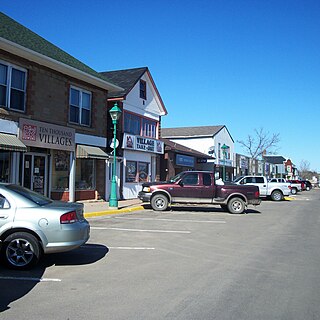
Three Rivers is a village in the Canadian province of New Brunswick. It was formed through the 2023 New Brunswick local governance reforms. It encompasses the former village of Petitcodiac. The Community of Three Rivers includes Elgin, Elgin Parish, areas north of Petiticodiac and a small portion of Salisbury.
References
- ↑ "Our History - Sentinelles Petitcodiac Riverkeeper". Sentinelles Petitcodiac Riverkeeper -. 2020-08-20. Retrieved 2023-03-23.
- ↑ Clow, Tara. "Causeway Bridge Returning Natural Flow To Petitcodiac". Country 94. Retrieved 2023-03-23.